Awesome Scientific Masterpieces That Were Trapped In Ice
Entertainment
There were many things already discovered by scientists which were preserved in ice. Interestingly, there are a few strange things. Some of the discoveries are so bizarre, they might even shock you. However, most of the discoveries are wooly creatures, stuck in ice, but some are truly weird.
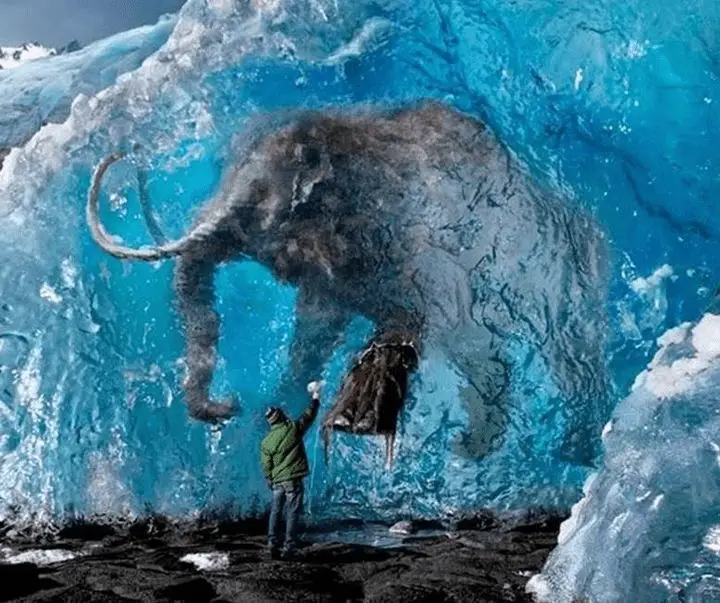
Here are some of the most amazing, unique and mysterious finds scientists have discovered in the icy north and south lands. Prepare yourself!
The Lighthouse
There are some areas up north which have very cold winters - such as Michigan, which might come as a surprise. Some winters can freeze the huge lakes and buildings as well. This lighthouse is one of those particular architectures. It is truly visible that it was very cold at one point - the spiral staircase is frozen solid, and it is obviously unmanned.
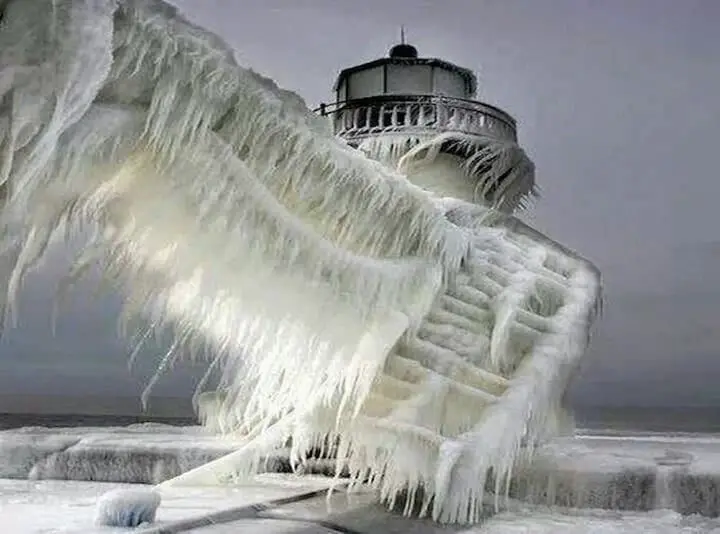
Some people actually have to deal with this cold - you can imagine it is not the best time. Of course, maybe they had a few shots of whiskey to make it easier. Anyways, this mysterious and unique looking lighthouse truly had to deal with some extreme weather conditions. Thank goodness this building is not something alive, because surviving this type of weather is impossible.
The Brain of A Mammoth
You would not believe it, but one of the strangest things scientists ever discovered in ice is the brains of a woolly mammoth. Interestingly, this mammoth was not found somewhere frozen in ice, but at some derelict permafrost of the Laptev Sea coast.
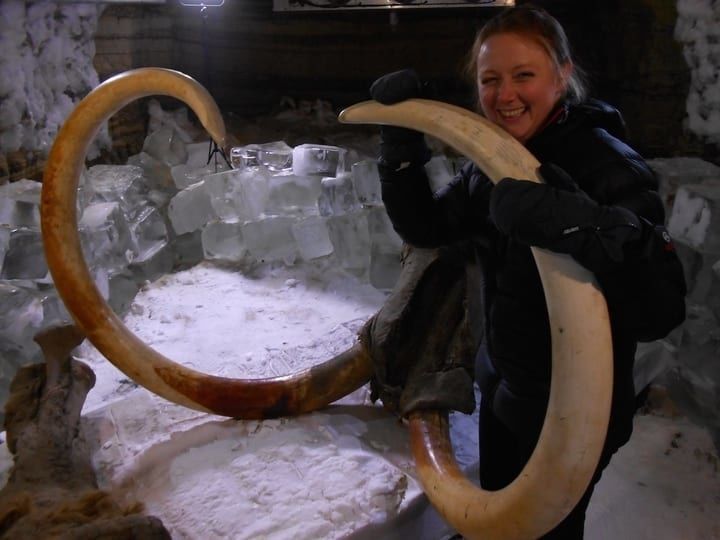
This is the only ever found mammoth which still had an intact brain. Truly an amazing discovery! This specimen is around 39.000 years old, which makes it even more amazing. The small mammoth was a child, just around 6 to 9 years old, and probably that is why scientists have found it so well preserved. It is unknown why did it die so early. It is most likely fell to its death right away.
A Fox
Of course, there are some animal discoveries which are more contemporary and not thousands of years old. Animals nowadays can freeze into ice the same way mammoths did. This is the case with this fox as well. The Arctic conditions caught up with it, and the cuteness of the fox could not save it either.
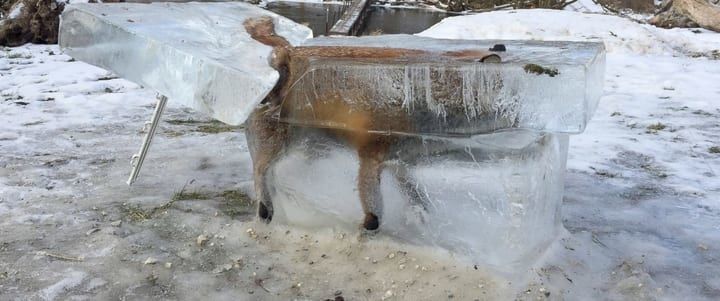
This particular fox was found in a German lake by a hunter. The hunter said he also found a deer and a wild boar as well, but his claims are unknown since there is no proof of it. We are not sure about those animals, but the fox will be displayed as an arctic appendage in a German hotel, as a warning of the dangers of ice.
They're Not Always Dead
Not everything found in ice by scientists is dead actually. They come across weird accidents or events due to the changes in the environment. Some alligators can survive and the entire cold winter in ice! That is something amazing, isn't it?
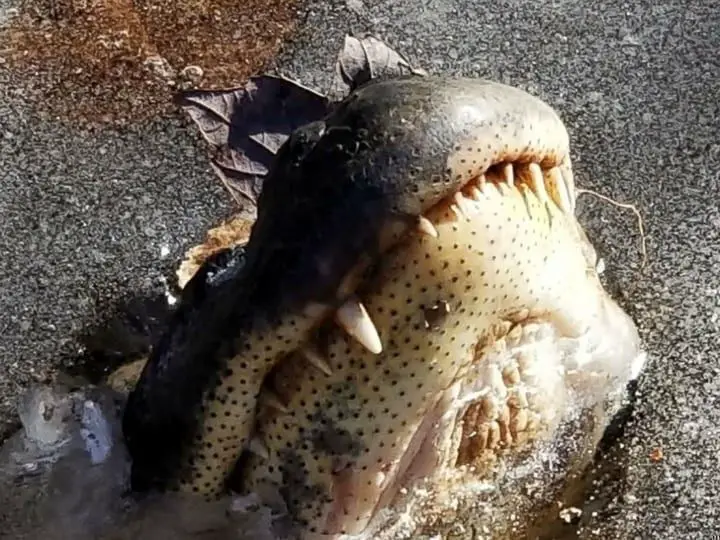
For some reason, their physiology lets these animals preserve their internal organs in ice cold conditions. How strange - humans will have severe frostbite in cold conditions, but alligators simply survive an entire winter. This is due to a state of temporary hibernation, which lets them live through even the most frigid temperatures. Only if we could do that!
Crashed Technologies
If you want to know more odd things preserved in ice, check out this crashed technology. This is not an ancient find, but most definitely a surprise. Planes have a tendency to surface, such as this 1952 military plane in Anchorage, Alaska, which was believed to be lost forever. It crashed into a nearby glacier because it flew too low sadly.
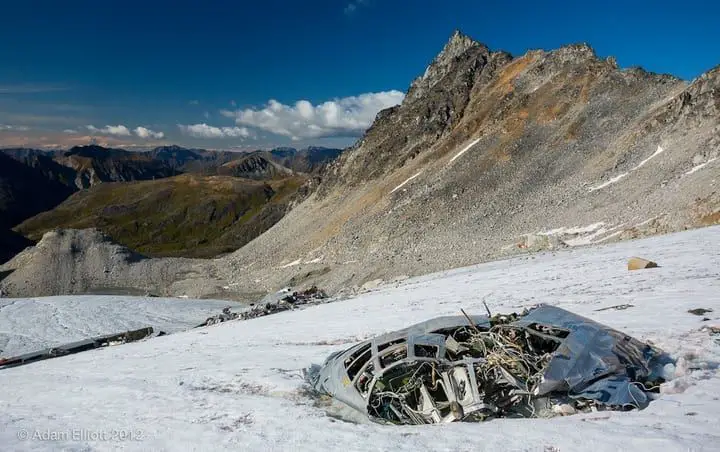
This crash killed 41 passengers and 11 crew members. The conditions were very dangerous so rescue workers and the police were unable to access the wreckage. It took over 50 years for the glacier to melt enough so workers can access the site.
A Frozen Fish Eating
What an interesting find we have here! A big fish is frozen in the process of eating a smaller fish. It is so interesting how cold the water got so quickly that this moment was frozen in ice forever. Even more interesting how fishermen found the fish!
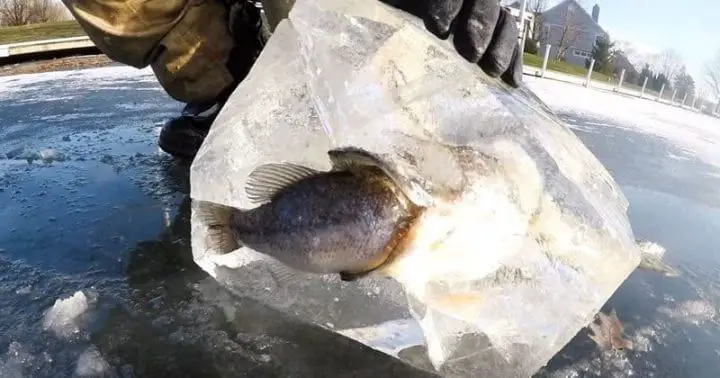
This finding does not show any cool and unique facts about our past, however, it shows the nature of the animal kingdom and how quickly can the weather change. Here we can see the methods of predation in full. We are lucky to see it frozen in time!
A Very Old Mummy
There are some cases when the discovery is way older than a tiger or a mammoth. These findings help to understand biology better and learn more about the evolution of animals. This particular finding revealed what way ice-age animals defended themselves.

This animal which is a nodosaur is about 110 million years old, which places it into the middle of the Cretaceous period. In this era which was very tense, intensive predation took place, so animals have to improvise to survive. The nodosaur had spikes and armor to defend itself.
A Special Deep Dive
These poor birds probably only wanted to find some food. Unfortunately, the deep dive they took under the surface freeze up the birds, and they have never surfaced again. In other words, the water was so cold that in a few seconds they had become entirely frozen.
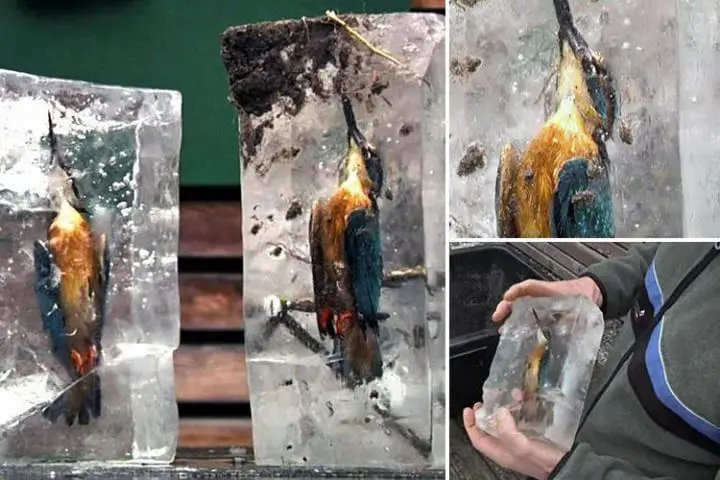
The kingfisher birds tend to suffer from this than any other animal. A few of these particular birds were found in Weisendorf in northern Bavaria. Probably the friends of these birds by now know that the winter time is not the best time to practice deep diving.
Frozen Ice-Age Dogs
Sometimes scientists find things which can be very close to our hearts. In this case, they have discovered an ice-age puppy frozen in the ice. However, this poor thing was not as well-preserved as some other discoveries are, it was still pretty intact. The scientists date this puppy to around 12.460 years old.
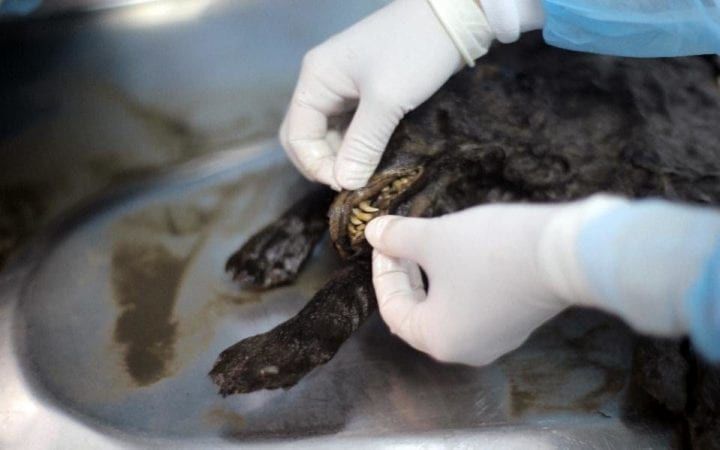
This puppy was found in the deep Siberian tundra was a great help in understanding canine history. Interestingly, the ice-age puppy was found while scientists were looking for mammoth tusks, which are way more common than puppies. While looking for the bones they have discovered something furry peeking through the ice. What an interesting and unique find!
An Arrowhead Made Of Copper
This copper arrowhead was found in an ice patch. What is interesting about this weapon is, that ancient cultures understood metallurgy way better than we would think. The society which made it was perhaps more advanced than some others because the modernity shows of this weapon.
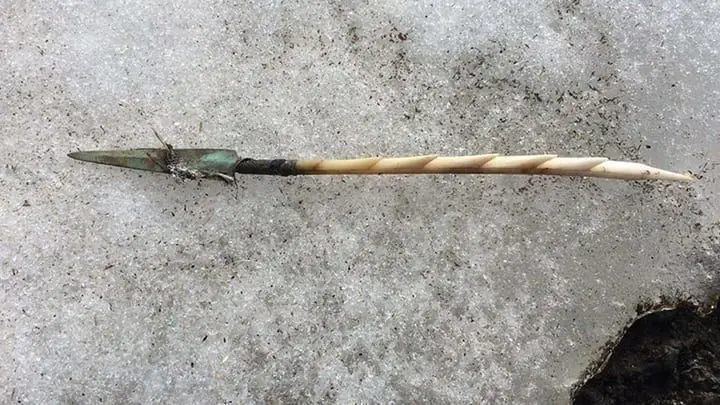
More interestingly, this arrowhead was made like modern-day fishhooks. In other words, it was specifically made for efficient hunting. This means the society was advanced and they knew how to be better in hunting and fishing. Yes, they did not have cool iPads and cellphones, but they hade some advanced hunting arrowheads.
Trace Of Vikings
The trace of Vikings is something scientists are happy to find, and these finds are very interesting. In Juvfonna, Norway, multiple Viking gears were found in several glaciers. Mostly reindeer-manufactured gears, sticks, bows, arrows, and leather shoe parts were found.

Most of these materials are somewhat around 3400 years old. The most interesting parts of these discoveries were the reindeer traps. They were made of bound sticks which made a noise if they were shaken. Then the reindeer would be lurked into a small group to be captured. Smart work Vikings, smart work.
Ice Covered In Blood
There are some mysterious things in Antartica. One of these mysteries is the blood-red stream which flows from a glacier named Blood Falls. The spooky water flow looks like blood, but actually, it is just regular water which is iron-rich. The same thing that keeps Mars so red. It might be a bit creepy, but it is very natural.
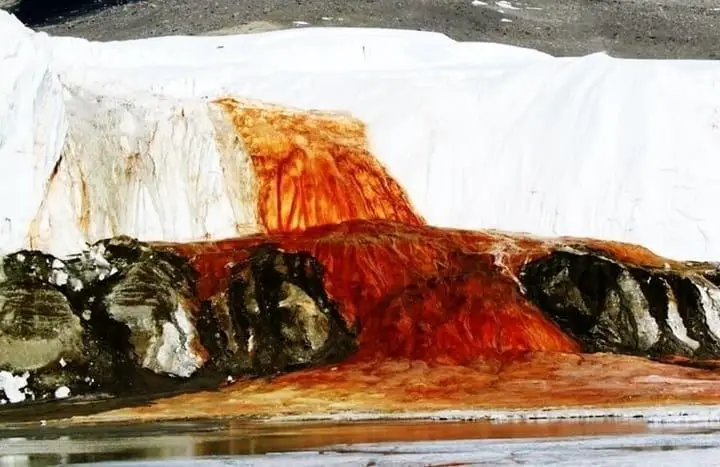
It is not a 100% know where does all this iron come from, but it is an interesting sight to see for sure. Thankfully it is not a scene of some horrible scary movie, but some geology mixing with oceanography, with an added element of glaciology. That is something truly peculiar!
Moraine
As glaciers move and advance they crush everything that is in their way. However, as they move they also pick up rocks and debris as well. This is what scientists call moraine. This moraine acts a cushion for the things the glacier otherwise would crush. And that is what happened with this old forest as well.
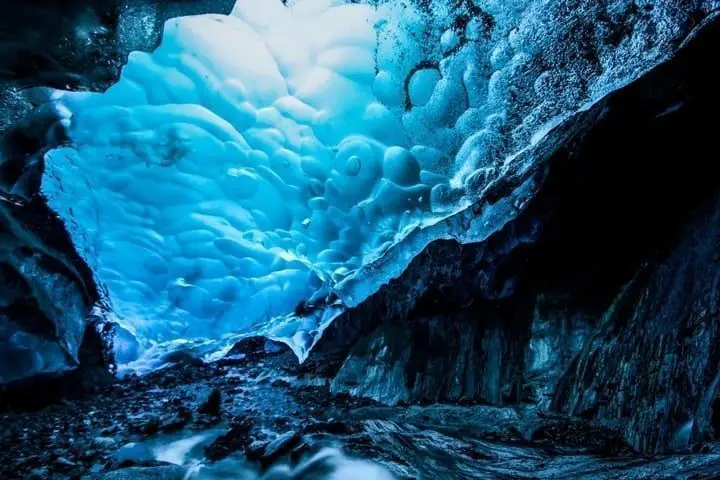
The moraine helps the layers of non-abrasive material to act as a cushion as the glacier movies so it does not destroy the trees, so instead, it will protect them. The forest is underneath it, so it still exists. In some particular places, you can find entire forests of the sites where glaciers have moved!
The Sacrifice of Humans
In Chile, there were some discoveries which were more on the concerning side. These things were the Inca sacrifices. In this culture, it was very common to sacrifice children and other unfortunate people to the highest peaks of the Andes Mountains.

The Incas believed that these sacrifices would bring them rain, protection, and better crops. The peaks can be as high as 15.000 feet, and so far 115 different burial sites were found. In 1954, a young body which was sacrificed was found, and they named her ‘Juanita’.
The Sacfrifice of Humans: Part II
As mentioned, the Incas practiced human sacrifice. In some rituals which they tribute to Sun God Inti were extreme in some cases. Such as extreme heights and cold places. To make sure these sacrifices worked, they have proceeded with more children sacrifices to test out these rituals.

The extreme colds preserved many of these sacrifices. Interestingly, one particular boy was so well-preserved that scientists were able to determine his blood type (type 0), age (around 8), and status (upper class) within the society. The glacier preservation already has given us so much to learn.
Preserving Ice
You might wonder how does ice preserve everything so well? Because the extreme cold temperatures prevent bacteria and other decomposers to attack the elements. In various cold environments, such as the Arctic, it is so frigid and deprived of oxygen that the bacterial decomposers cannot even function. Or, if they actually do, it is a way slower process than in normal temperatures.
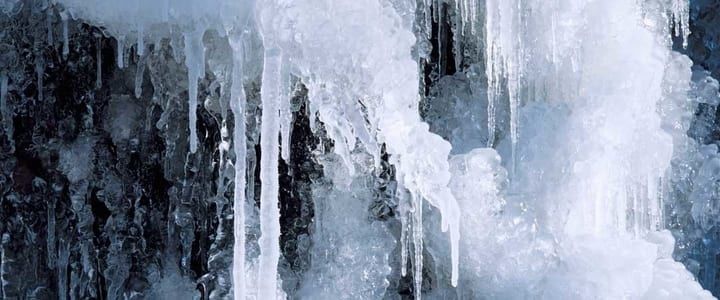
So because these bacterial decomposers cannot function, the artifacts or whatever is trapped in ice won’t break down. This is why scientists have the opportunity to find all these great discoveries, such as bodies of sacrifices, woolly creatures, and various artifacts. The deep north and south regions are perfect for these.
War Scenes
There are other interesting and strange things preserved in ice, such as left behind war scenes. During WWI, some battles were fought high up in the Alps. This is basically the worst way to find a battle because the extreme cold temperatures left many soldiers frostbitten or even worse.

Many soldiers who fought in cold temperatures did not die due to war wounds or at the battlefield, but actually because of the severe cold blisters. And the same thing happened with the soldiers’ bodies: frozen into preservation. Believe it or not, scientists have found stranger things than frozen-in soldiers.
They Even Found People!
Other people were found in ice, not just the sacrifices of the Inca society and the Otzi man. Many people have suffered from similar fates. Not long ago scientists found a body which is around 300 years old. The interesting part about this discovery is that he was an ancestor to the nearby First National people.

They have named the body “Long Ago Man”. He was found in a robe which was made from the skins of 95 pelts, a walking stick, fur coat, and fish scales in his pockets. This means this man was probably well-off. Too bad for him: unfortunately, he was one of the many people who fell into the glacier.
A Mammoth Discovery
Among the most common finds in ice is the woolly mammoth, and it is probably the most 'normal' one on this list. This prehistoric beast was found in an ice tomb in Siberia, and it was dated around 39.000 years old. Pretty impressive. The Arctic places like Alaska and Siberia are the most common places for these kinds of discoveries.
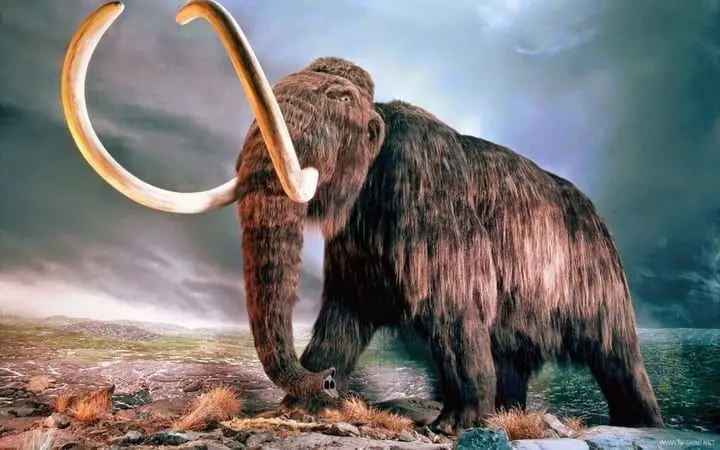
Scientists said this finding was probably the best preserved mammoth discovery ever. Where did scientists exactly find this beast? At the Novosibirsk Islands, an archipelago in Northern Russia. The blood and muscles tissues were still intact, which gave the possibility of cloning to researchers. Truly remarkable!
Very Ancient Spears
Many human objects were found already in melting ice patches. In Yellowstone, in a particular area where no human signs were ever found, scientists have discovered a 10.300 year old spear. That is very old, considering our history, especially if you start to think about it.
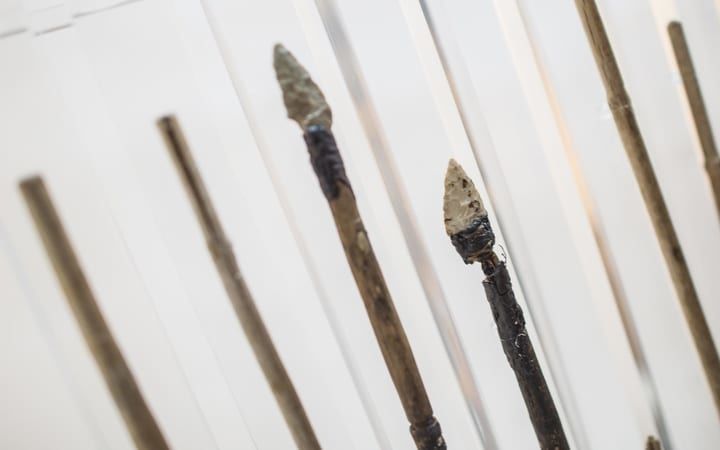
As much expected, the spear was used for hunting and killing, most likely bison, elk and maybe wolf which were the common fauna at the time. This means - and a very important discovery - that in the cold Yellowstone area around Idaho, Montana, and Wyoming, there were humans.
5300 year Old Otzi Man
One of the most famous human discoveries ever found in snow and ice is the Otzi Man. He is about 5300 years old, a well-preserved body, and he was discovered in the Alps between Austria and Italy. One of the most amazing facts about the Otzi Man is that he is the ancestor of the people who live in the nearby area in Austria.

One of the less well-known facts about the Otzi Man is that he carried many diseases. He had gum diseases, gallstones, bad joints, hardened arteries, Lyme disease, and parasitic worms. He also had an arrowhead in his shoulder! He also died from a skull injury. That is pretty sad, Mr. Otzi Man.
Russian Rhino
Animals with big fur are very common in extremely cold areas. That is why we used to have an animal named woolly rhino. One of these woolly rhinos were discovered not long ago, and it was so well preserved that most of its fur was still present - at places where predators did not attack it. This particular rhino was around 18 months old.
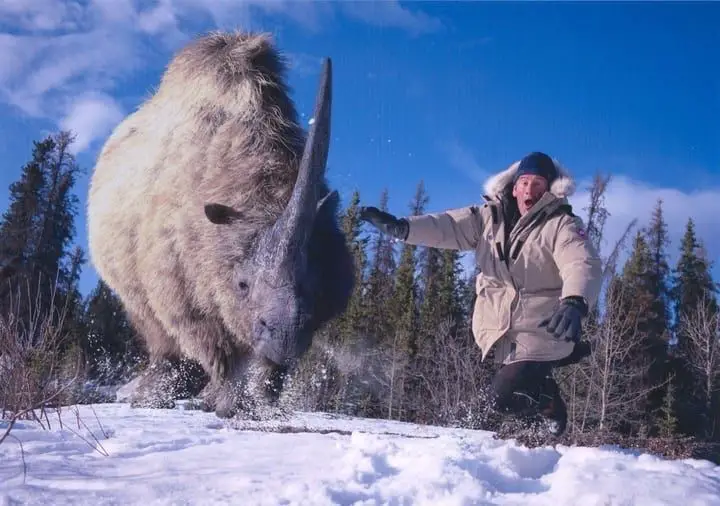
This woolly rhino was found in Sakha, Russia, which is one of the coldest regions of Russia. Scientists believed that this species died out around 10.000 years ago. Finding this well-preserved discovery helps scientists to understand history better, such as where and how did these animals live, and what particular specimen lived in various areas.
Cave Lions
These roaming tigers are also called cave lions, and they have lived in the arctic circle. Russian scientists recently found a unique specimen in a Siberian region, Yakutia. Just like the woolly rhino, these tigers were just cubs as well. They were so well preserved, that they still had fur.

Like other ice age animals, these sabretooth tigers died around 10.000 years ago. Scientists believe that this was due to the mix of human hunting and global heating up. Another of these tigers were found on the coast of the United Kingdom, which weighed almost 900 pounds. From the very same icy waters, the scientists discovered creatures from the same ice age such as mastodons.
Interesting Ancient Weaponry
Scientists have found many interesting items by humans, such as ancient weaponry. These interesting finds include the atlatl (which is pronounced at-latel). This item was one of the very first forms of weaponry made by anatomically modern humans. It was more advanced than the bow and arrow was.
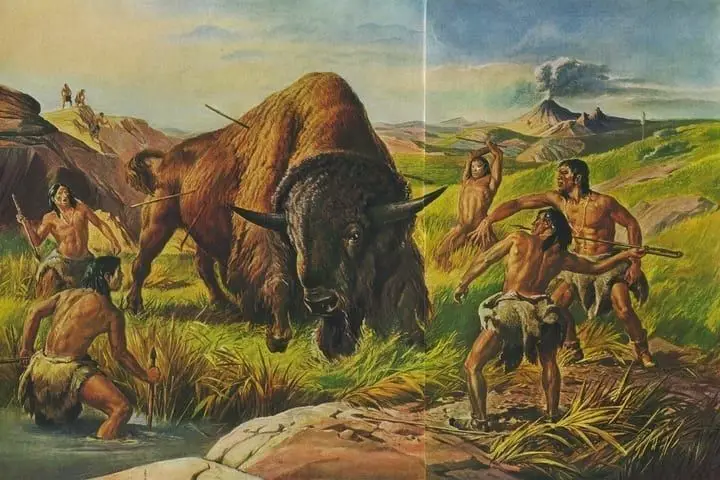
The atlatl was made up from a handle and a notch at the end and it would hold a four to six-foot-long spear. Interestingly, these weapons were ‘custom made’ which means they were customized for each individual. The great thing about the atlatl was that it would allow an extra length of travel and it was more accurate than an arrow.
Something Interesting In The Poop Of Caribou
In some strange cases, scientists find the most absurd and unique discoveries, such as in the poop of a caribou, where a dart shaft was found. Yes, indeed it might sound a bit strange and gross, but it very informative. What does this tell us exactly? Well, as a starter, it points out that there were hunters in this area. Also, it directs toward the fact that these hunters knew about weaponry and craftsmanship.
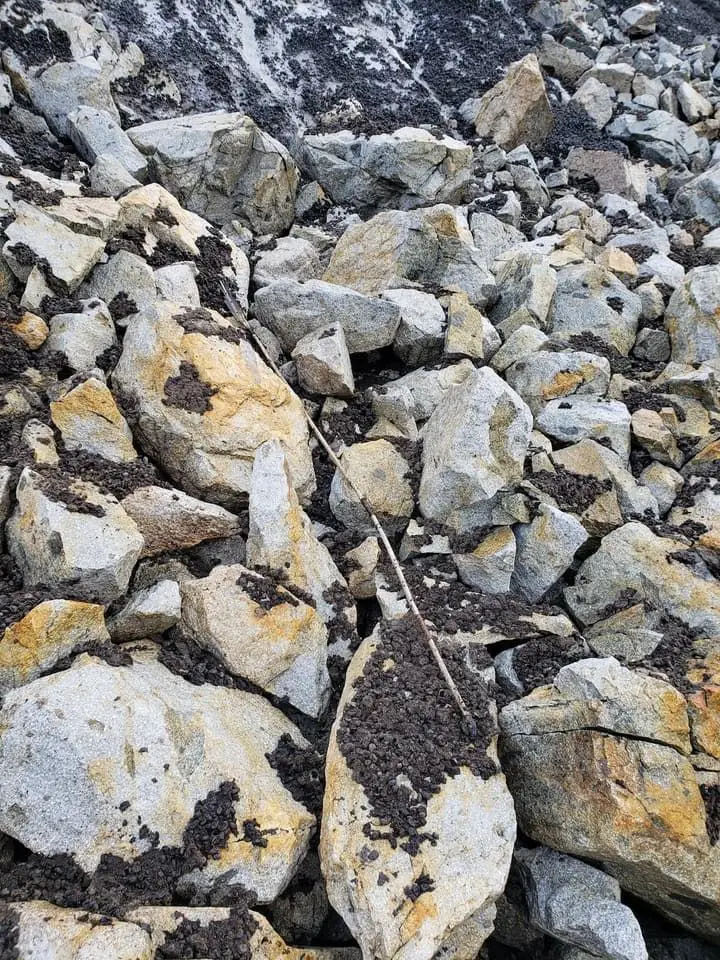
Actually, finding things in the poop of various animals can be a very interesting and good source of information. These findings tell us where animals moved around and what type of animals were in the area. This means scientists have to get over any poop related phobia in order to discover the treasures of ice. All we have to say is gross.
Really Old, Frozen Bacteria
One of the strangest discoveries scientists have found frozen in ice is old bacteria. Some of the most recent discoveries, actually, have been dated back to be over 25 million years old. A different ice patch which carried bacteria was dated back to around 8 million years old. That is not only old but very impressive too.

However, only a few types of bacteria can survive these frigid conditions. In order for a bacteria to survive it has to be able to form spores. These spores help the bacteria to hibernate. In return of hibernation, they make the external conditions basically bearable.
Even More Old Bacteria
There are even more different types of bacteria found in ice, however, there are some very dangerous types. In some cases, the bodies of dead animals carry these bacteria, and in some cases, they simply exist on their own. Are these ancient bacteria at least good? The answer is simply no - they are not only harmful but dangerous as well. For modern bacteria, we have developed immunity, but we are very weak against these old ones.

In the Arctic peninsula of Siberia, some ancient bacteria have emerged and devastated several smaller towns in the northern parts of Russia. There are some bacteria in the Arctic permafrost like the bubonic plague. Scientists have to pay close attention to the smallest things that could emerge from the ice patches.
Melting Ice Caps
Most of these discoveries were made possible by the ever-changing climate. As the air gets warmer due to the atmosphere changes, the snow and ice melting becomes quicker, and sadly at a point more is lost than actually gained. This all means that various bodies and iced treasures will melt and left to the wearing elements.
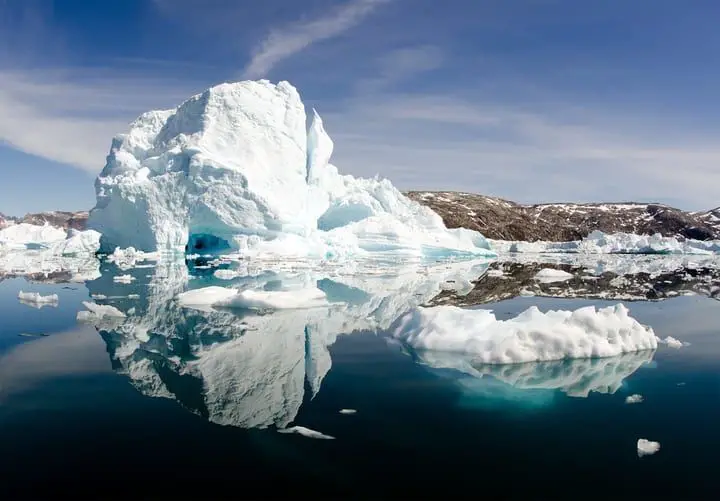
Yes, global warming is bad for us, however, it allows researchers to study and discover some of the most amazing ancient and prehistoric creatures and objects. There is always a little good in the all bad, and this way we can find something great in disappointing events.
Droppings Of Animals
One of the most common finds in ice is the droppings of animals. For some people this might not sound like the most exciting discovery, however, animal waste tells us so much, such as the types and habits of these animals. The droppings also tell us how did these animals live thousands of years ago. For instance, we can learn if these animals were herbivorous or carnivorous.

Caribou droppings tell scientists what did these animals eat, where did they eat it, and where did they get the food. If the food type was not found nearby, it means the animals have traveled a certain amount each day. Most cases there is much more to know than just the type of animal the droppings belonged to.
Global Warming And Its Issues
Of course, the rapid melting of ice and snow is giving a better chance to archeologists to discover great items and bodies, at the same time the defrosting also gives decomposition a bigger chance. What does that mean? It means, as ice and permafrost melt, the exposed artifacts and bodies will have to deal with elements, without any shelter.
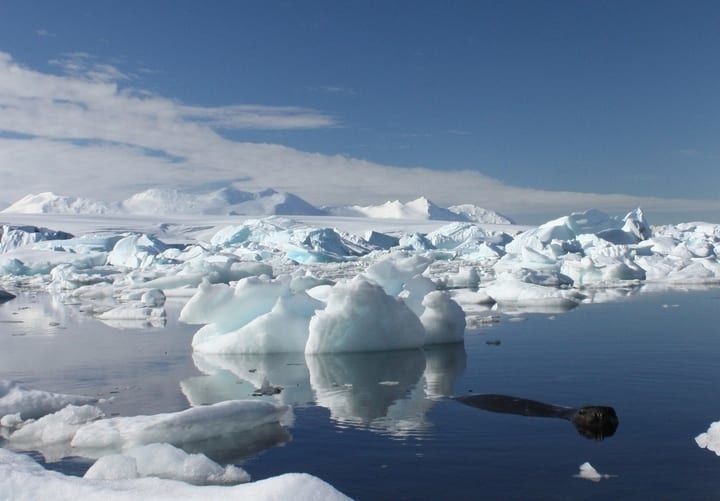
While being exposed to the elements, these materials can start to decompose. For example, arrowhead will get detached from their sheathing within one year. Such as sinew, which is a material used for wrapping objects, will deteriorate with the same rate. Bones have about 10 years before they wither.
Patches Of Ice
The arctic ice patches are one of the places which are experiencing a highly accelerated rate of deterioration. These occur when there is snow and it does not melt from the year before. As the years go by without melting, ice patches will build. In other words, a layer of ice is built with some snow covering and it will not melt.
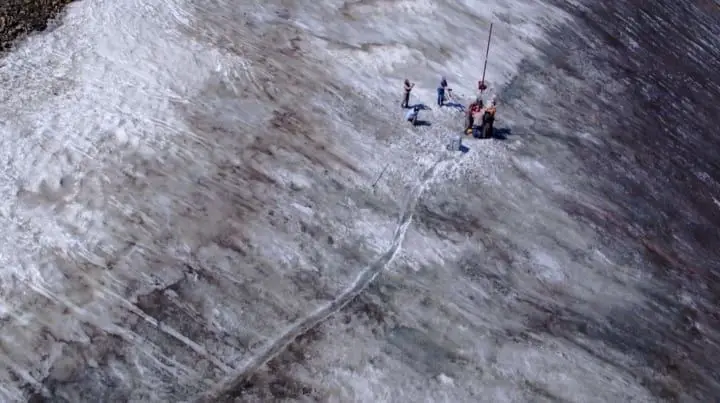
Animals often wander around these ice patches. If they die they wi most likely freeze into the ice layers. However, the most often these animals leave stuff behind which are discovered by scientists. Tom Andrews was a pioneer, and he studied many of these ice patches. He gathered enough money to go on discovery expeditions to places like Alaska and the Canadian Arctic.
Constructing Their Shelter
Scientists have also discovered some interesting things in these ice patches, like rare wood. These woods were nowhere to be found nearby to the places they have discovered them. This means the trees these woods come from were carried to the ice patches, from several miles away. the wood was stripped, carved and carried. Interesting!

Scientists believe that this wood’s purpose was shelter while humans were hunting. The hunters would make these shelters to bear the cold while they waited for caribou and reindeer to get close to their sites.
The Basket That Contained Information About The Area
In these ice patches, scientists have also found a very well preserved birch basket. Indeed, the basket is not a mysterious find, however, it reveals information about the area and the people who made the basket, also it helps to learn about what did they use it for. The basket was found in 2003 and it is about 650 years old.
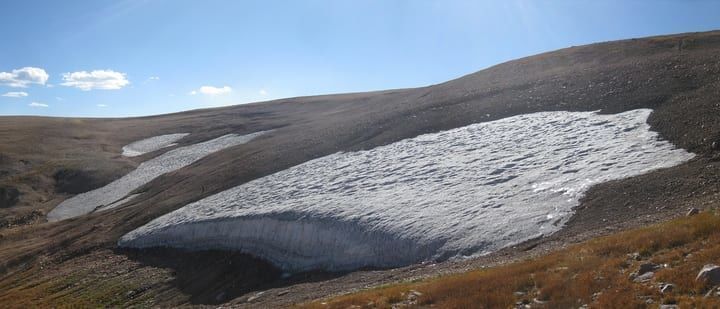
The basket had a 2.3-inch high rim and sloped edges. It was also about 9.8 inches in width. The interesting part about the basket is that it had a weaved pattern, which tells us how creative the tribe was who made it. The basket was folded into wooden panels, without any plant material. It is most likely that it was used for gathering berries.
Findings On Ice Patches and Glaciers
As a response to global warming and its effect, the ice field science has been very busy. Due to this, we have glacial and ice patch archaeology. These fields of studies have both been leaning towards the discoveries, which have been found in glaciers, ice patches, and permafrost.
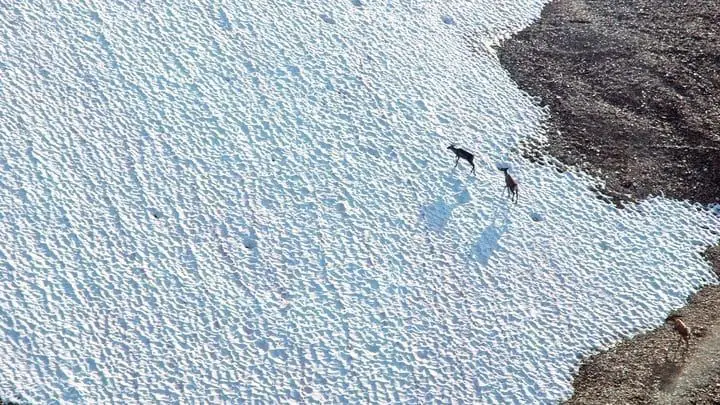
Global warming reached a rate where ice and snow melt at a very high rate, which means there are many findings scientist have to study. Scientists are even gathering in groups to discover and exam these materials before they are gone forever. This way we can all learn about the mysteries of ice.
A Contraption To Capture Gophers
This might sound strange. Okay, this is not exactly what it sounds like - not a stick made out of gophers. However, that could be quite fun as well. Anyways, it was a stick, or a contraption more likely, that was used to capture gophers. This interesting and complex trap worked like a loop around the heavy duty stick. The stick was then connected to a very strong string.

There was pressure built into the trap, and when the gopher lefts its hole it would snare it. This trap which was discovered is about 1800 years old. It is amazing how people found a way to make such a complex and clever trap almost 2000 years ago. I guess humans are pretty smart after all.
Where These Discoveries Are
One more very interesting fact about these ever-moving glaciers and ice patches is a different activity pattern. For example, at certain mountain rangers scientist have found very unique objects, not common at all in those areas. These findings help us to understand the movement of people and what could they possibly have done in that area.

Such as various ice patches in North America and Norway, the most common finds are tools used for hunting. In colder areas like the Alps, scientists have discovered materials used for traveling. And objects found in South America are most likely to be connected to rituals. Everything was used for a unique purpose.
Weapons
Scientists have found more weapons in ice patches, such as the willow bow. This bow was carved from a willow tree, which was used to kill and hunt elk and reindeer. One of these bows which were discovered is around 340 years old. Interestingly, one of these bows was found in an ice patch by Tom Andrews.
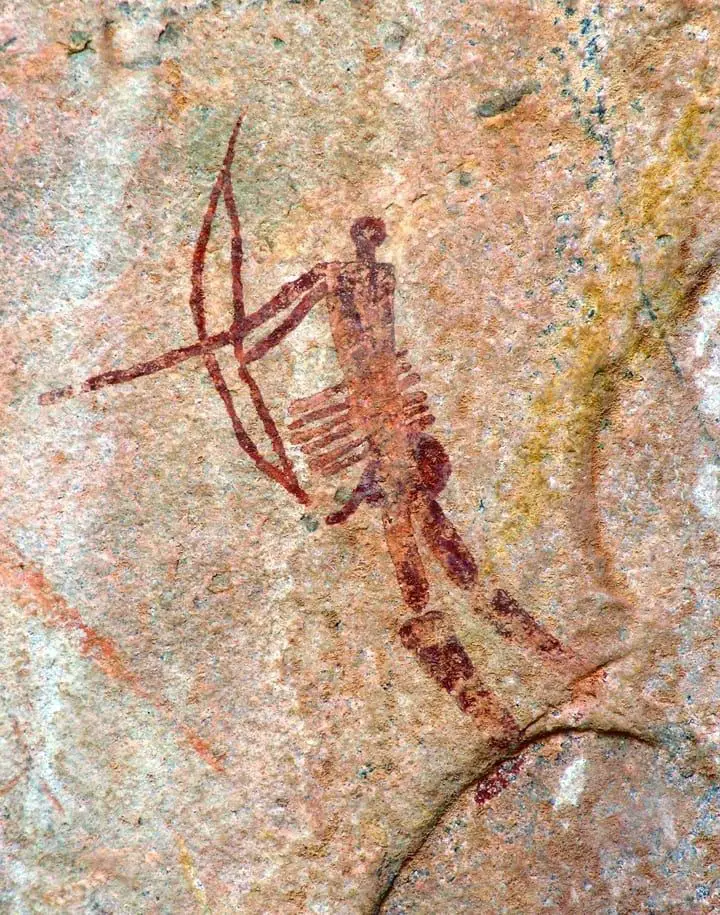
First, Andrews had to raise funds to start his expedition. he got funds from local and national funders. Then, he had to gather aerial photos from the ice patches which were inaccessible. Lastly, he had to travel with a helicopter to these sites, and his work was fruitful.
The Most Surprising Things You'll Find In Ice
As the ice patches move and melt back, and the glaciers recede, scientists will find weirder and weirder things in ice. So far, we have come across dead people, long-gone animals, and amazing artifacts such as bows, spears, and baskets.
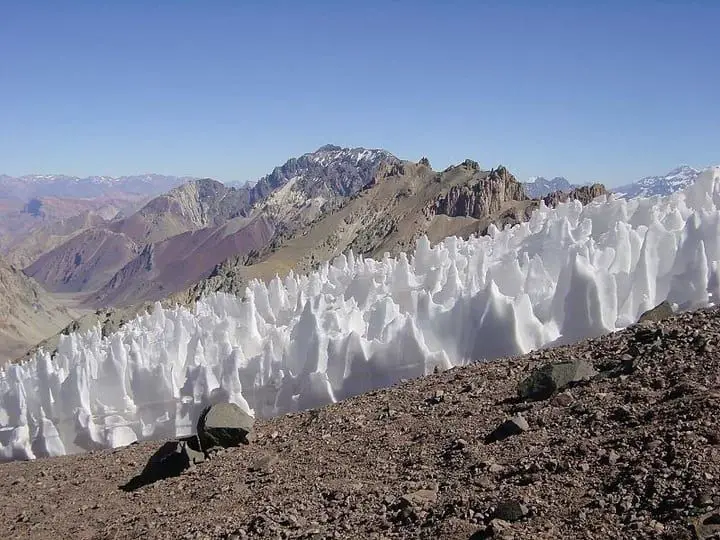
Whatever scientists will discover next, it will help us to learn more about the ice age and the past. And when we have more information, we will be all a little smarter. Sadly, there is a very small chance of finding alien technology frozen into ice, but there will be plenty of cool things for sure. So hold on tight, as scientists go and discover more glaciers.